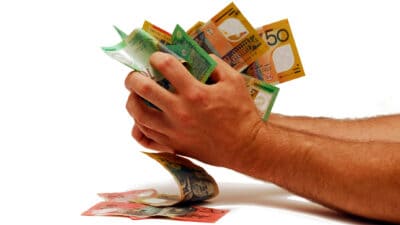It's an unfortunate side-effect of the human condition that we tend to like buying assets that are going up in price. If you buy ASX shares and they spend the following month rising by 10%, chances are you'll feel like a genius. But if you buy and the opposite happens, you'll likely end up feeling like a fool (and not the good kind of Fool).
Yet buying during a time when the market is struggling is often the best thing you can do for your long-term returns. After all, they don't say 'buy low, sell high' for nothing. Seeing as the psychological barriers against putting money into a falling share market are significant, here are four ways to get around these barriers.
How to buy ASX shares in a falling stock market
Buy ASX shares in small amounts
Obviously, the reluctance to invest money into a falling market grows with more money on the table. It feels a lot less 'risky' to put $500 into shares than $5,000. So why not try and tip your toes into a falling market rather than jumping straight in and buying ASX shares hand over fist.
Instead of investing $2,000, it might be easier to drop $500 in, and then if the markets fall, keep deploying that cash out. You might even achieve a lower share price entry point if you try this method over a month of lacklustre market returns with your $2,000.
Dollar-cost averaging
Dollar-cost averaging (DCA) involves setting up a recurring investment that hits the markets in a periodic fashion. It could be $500 a month into Commonwealth Bank of Australia (ASX: CBA), or else $2,000 a quarter into the Vanguard Australian Shares Index ETF (ASX: VAS). But the key to this is absolute consistency.
The beauty of dollar-cost averaging is that it turns your investing to autopilot. If the money is being deployed in small increments like clockwork, there is less worry about whether you are investing at the right time.
Many investing and brokerage platforms now offer a DCA service, so check out yours to see if you can jump on this wagon.
Diversify with ETFs
Exchange-traded funds (ETFs) are one of the best ways to invest if you're nervous about the current investing climate. This is because of how diversified they are. With an individual company, working out how much you should pay for its shares can be a complex task, and one prone to misjudgement.
Simply knowing that an index fund like Vanguard's Australian Shares ETF holds 300 ASX shares within it might help take some of the pressure off. You could even combine investing in an ETF with a DCA strategy for maximum peace of mind.
Make a rational, logical plan
One of the worst things about a falling stock market is the unwelcome emotions it can elicit. We all think we've got a handle on our investing situation when the markets are going up. But if you don't already have a plan for the inevitable share market crash, you might find yourself tempted to join the crowd and panic sell when fear grips the markets.
The best antidote to this potentially disastrous situation is to have a logical rational plan that covers how you plan on investing during the good times and the bad. Perhaps every three months, you take a look at your share portfolio and think about what might happen to it if there is a market wobble.
If you're scared, then perhaps you'd like to sell some of your more volatile shares when they are trading at a high point. Or perhaps increase your cash position for peace of mind. The most important thing is to make sure you are never surprised or worried when the markets take a turn for the worst – because, as certain as night follows day, they eventually will.









